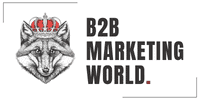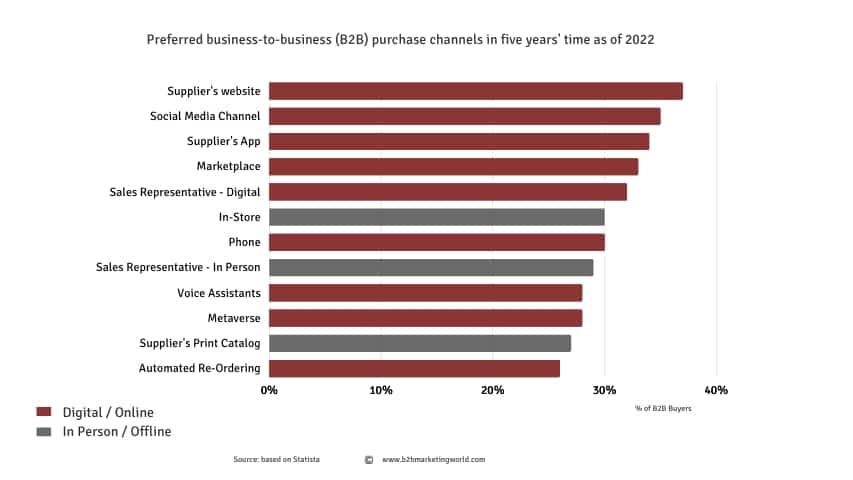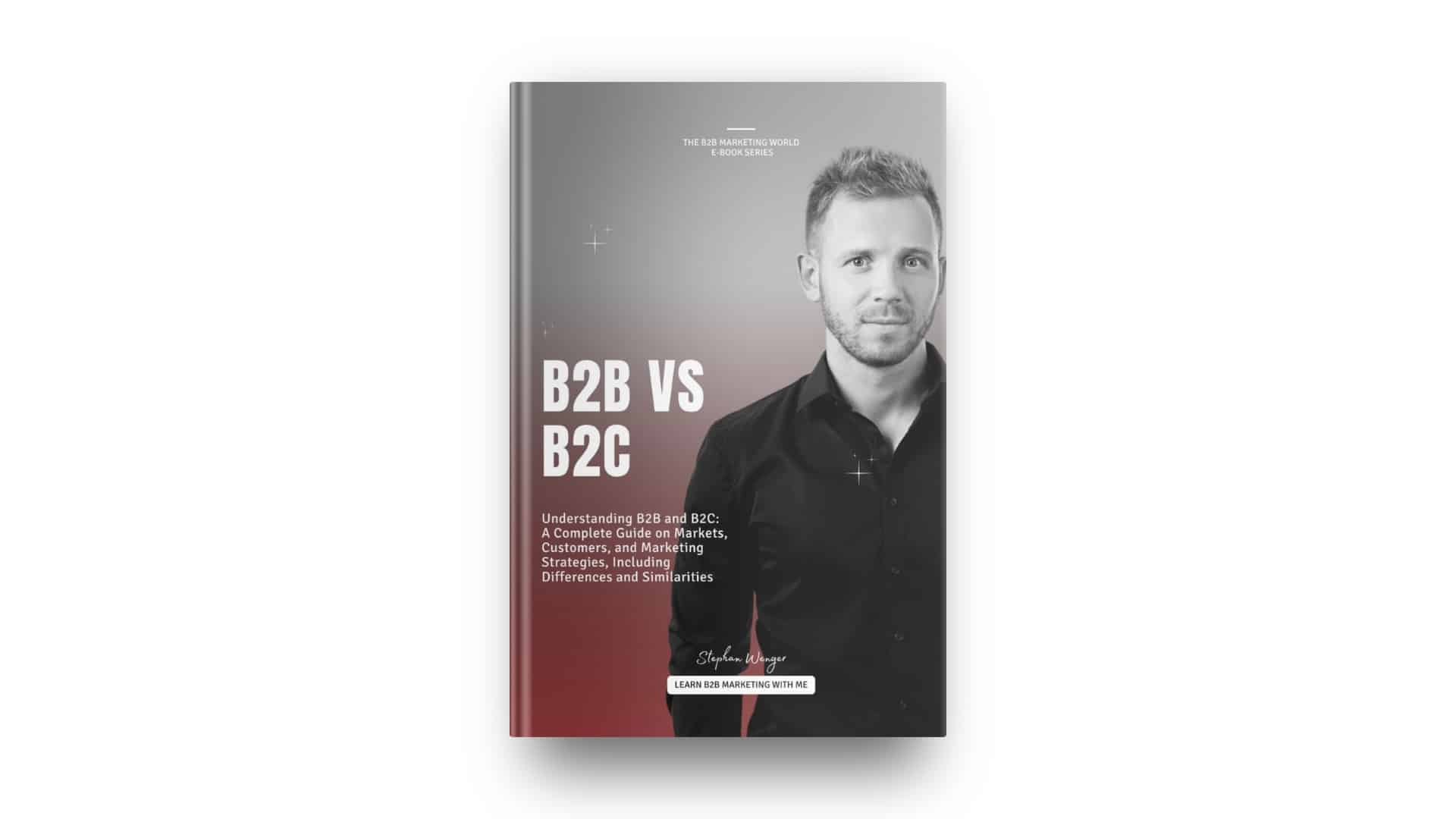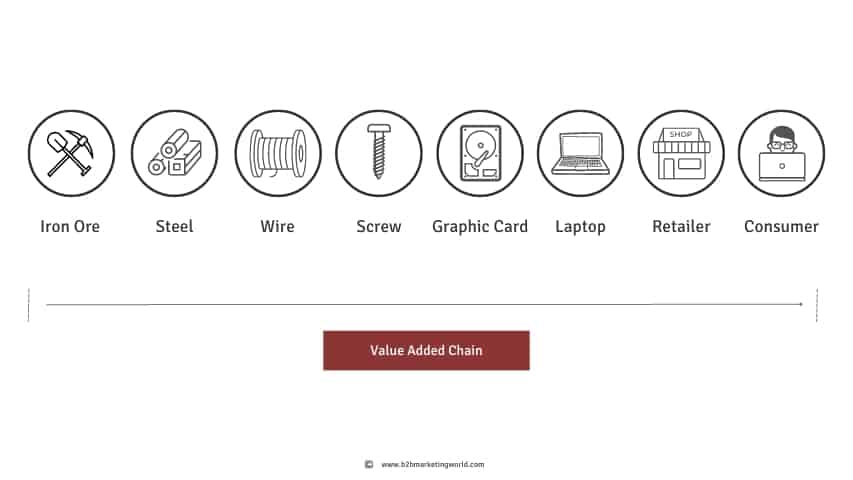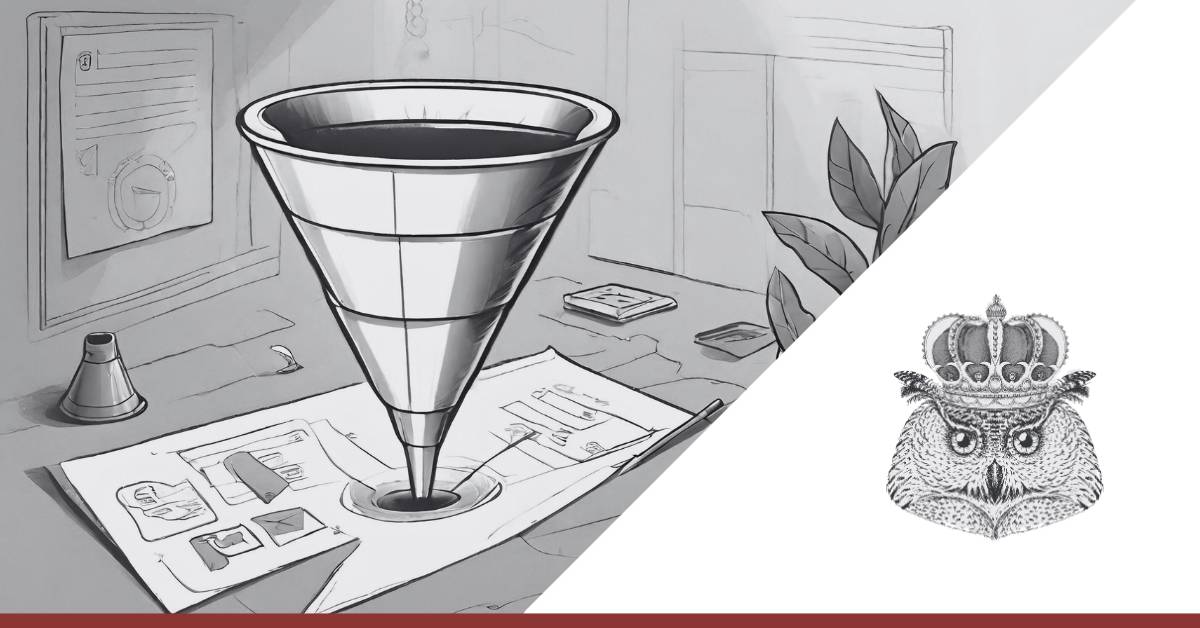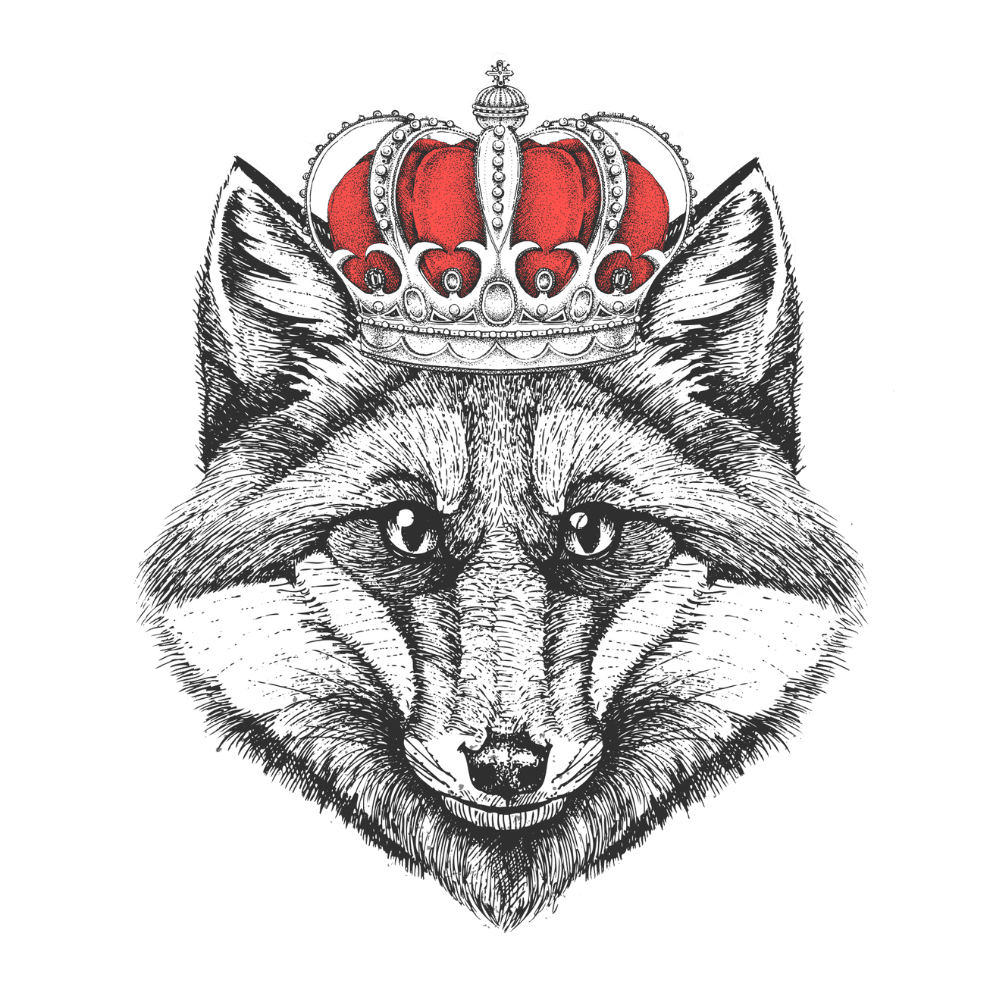What is B2B Sales? Comprehensive Definition, Examples, Tactics
A Guide to Modern B2B Sales
No time? Read Summary
Business-to-business sales (B2B Sales) refers to companies and sales teams selling to other companies. In contrast to B2C sales, where goods are sold to consumers.
The traditional linear sales funnel is no longer sufficient in today’s digital landscape. B2B customers are well informed before the very first contact. Only 17% of buyers’ time is used to meet with potential suppliers. Half of the time, research is done independently, online and offline.
Companies must establish touchpoints throughout the buying process. This requires both the marketing team and sales reps to work together.
In this post, I will show what B2B sales is, what it means, and how it works and give you real-life sales examples.
Let’s go
What is B2B Sales?
Learn how Sales works in a Business Market
B2B sales, also known as business-to-business sales, is a term that refers to the buying and selling of goods and services between two businesses rather than between a business and a consumer.
B2B sales is a complex process where companies collaborate in transactions to support each other’s growth and drive industry progress through innovation.
B2B sales spans the entire value chain, where every piece is essential. Raw materials are bought and sold. Intermediate products pass hands. Wholesale distribution channels stock retail shelves.
But B2B sales go beyond physical goods. They include expert consulting services, crafted to solve specific business challenges. They deliver specialized software, designed to enhance efficiency and boost productivity. In essence, B2B sales are about more than just products—they are about solutions.
On a global scale, B2B sales are the backbone of countless industries. Without them, consumer products would not exist. Shelves would be empty. The B2C market would not work any more.
Strategic partnerships are key. Companies collaborate, pooling their strengths and resources, uncovering new avenues for growth. These partnerships and networks are typically global.
An overview of preferred B2B purchase channels shows how complex modern B2B sales is.
Preferred B2B sales channels © Data from Statista, Design B2B Marketing World
Difference Between B2B Sales and B2C Sales
Understand the Two Major Market and Customer Types and How They Differ
Chapter Overview
There are two primary market and sales categories: B2B and B2C. At first glance, the primary distinction between these two types lies in their customer base. In B2C, the customer is the individual end consumer, whereas, in B2B, the focus is on targeting other businesses or government entities.
The main differences include the following:
- Higher average transaction value
- Longer sales cycles and Multiple stakeholders
- Educated, rational buyers
Higher Average Transaction Value
B2B sales, in contrast to B2C sales, often involve significantly higher transaction values. This is because the goods are either purchased in large volumes (e.g., screws for manufacturing machines) or are very expensive (e.g., complex industrial robots).
While the B2B sales pipeline can range from small orders, e.g., purchasing office supplies, the average transaction volume is not typically found in most B2C industries. Exceptions to this include real estate, automotive, and luxury goods.
Longer Sales Cycles and Multiple Stakeholders
B2B sales cycles tend to be longer due to the involvement of multiple stakeholders in the complex decision-making process. Unlike the three B2C industries mentioned earlier, B2C buying decisions are often based on emotions and immediate needs (e.g., food, clothes, the latest iPhone, going to the movie, etc.).
A desire for a tangible return on investment, a measurable competitive advantage, or a logical solution to a critical problem typically drives B2B decision makers.
In B2B sales, every decision made directly impacts the company’s bottom line. Given the high purchasing budgets, decisions require the consensus of multiple decision-makers. This concept is called the “Buying Center“. The deal’s value directly corresponds to the number of “yes” responses needed for a successful sale.
Educated, Rational Buyers
B2B buyers are generally well-informed about the products and services they purchase.
The companies they engage with must meet specific criteria, and purchasing departments conduct comprehensive evaluations before establishing partnerships.
This includes thorough fact-checking and assessing the financial health of potential business. Overall, B2B buyers are well-educated and act rationally.
However, there is the human factor. Unless purchases are automated (e.g., restocking or long-term supply contracts), every buying decision is ultimately made by a human who experiences emotions.
These aspects are only a partial list of all specifics of B2B buyers. However, they indicate why there’s a difference between selling to businesses or consumers. Furthermore, these differences also impact how to use marketing in B2B vs. B2C.
B2B Sales Tactics and Techniques That Work
Are You Happy With Your B2B Sales?
Chapter Overview
Successful business-to-business sales require a strategic approach that goes beyond traditional selling techniques.
The B2B sales landscape has undergone significant change. 67% of B2B sales happen already online. B2B buyers are informed about your portfolio as close to 50% research online and offline on their own.
This results in a new generation of well-informed and online-savvy buyers. The generation change from Millennials to the digital native Generation Z is happening now.
This new generation of decision makers is skeptical towards sales pitches, has profound trust in peer recommendations, and is aware of risks when purchasing online.
As a result, modern B2B buyers demand more from potential business partners. These expectations include the need for social proof, effective social selling, tailored and specific information, and streamlined purchasing processes.
Here are tactics on how to meet these expectations:
- Become Thought Leader
- Social Selling and Social Proof
- Account-based Selling and Marketing
- Digital Sales Processes
B2B Sales Tactic #1: Become Thought Leader
Modern B2B buyers are highly skeptical about sales and marketing messages they encounter. People grow used to associating advertising with exaggeration, yes, even lies.
One effective approach to address this challenge is through “Thought Leadership“. The objective is to establish oneself as the go-to, credible source of industry knowledge.
Thought Leadership is a great way to develop trust. Trust is an essential factor for successful sales in B2B.
This strategy relies on educating your target audience to demonstrate your expertise. Collaboration between the marketing team and sales is crucial to meet this objective. Common actions include:
- Webinars
- Success Stories
- How-to-Guides and Playbooks
- Competition Overview and Solution Benchmarks
Ultimately, Thought Leadership operates as a pull strategy. This means your target audience is drawn to your business rather than vice versa, which characterizes a push strategy.
B2B Sales Tactic #2: Social Selling and Social Proof
In line with Thought Leadership is Social Selling and Social Proof strategy. Professional networks like LinkedIn, with over 950 million members, are perfect for displaying your expertise.
As stated earlier, B2B buyers trust peer recommendations and are well-educated before purchasing. A source of information is social media. Your B2B sales team must use this fact to build a solid social media presence.
At this point, let us clarify what social selling means.
It is a misperception that social selling means “selling to people on social media”. Cold pitches via direct message on LinkedIn have nothing to do with social selling:
- 31 minutes from connection request to cold pitch
- No connection to what I do on LinkedIn
- Random fact that should create trust
- Class “let’s hop on a quick call” CTA
That is called Spam.
Example of a cold pitch on LinkedIn , that is mistaken as “Social Selling”:
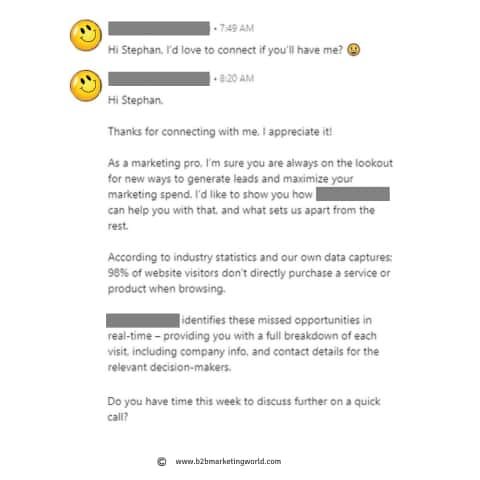
Social selling is the strategic social media usage to establish connections with potential customers, build relationships, and actively engage with promising leads.
Give, not take, is a foundation of social selling. Provide value for free, and you see that prospects will seek your support.
Social selling success leads to increased sales and cultivates social proof. By combining thought leadership and engagement on social media, you establish recognition and credibility among your customers. Sharing your achievements enhances social proof, as B2B buyers value the opinions of their peers.
B2B Sales Tactic #3: Account-based Selling and Marketing
Account-based selling and account-based marketing (ABM) involve using tailored information to communicate with a specific company or account effectively.
This approach combines B2B sales and marketing teams, allowing both departments to share information and work towards a common goal.
The main benefit for the target group is receiving highly relevant information. It stands in contrast to mass communication, which is often considered spammy. B2B decision makers respond positively to this tactic as it addresses their pain points. However, this approach requires a deep understanding of the most pressing problems faced by the target group.
Another advantage of account-based selling is that it allows the sales team to focus on one customer at a time. This heightened level of awareness results in a higher quality of sales activity.
B2B Sales Tactic #4: Digital Sales Processes
Modern B2B sales processes use different digital options. The range is from fundamental digitalization, such as using CRM systems, to fully automated online sales.
One significant trend in B2B sales is the steady rise of eCommerce. Online transactions continue to increase, transforming how businesses operate globally. With the advent of global sourcing, international companies are leveraging digital sales processes to navigate this evolving landscape successfully.
The integration of digital processes in sales also leads to a higher level of efficiency in the sales funnel.
By partially replacing human involvement with automated processes, businesses can streamline operations and drive better results.
This shift offers a significant advantage for purchasing departments, as eCommerce provides 24/7 availability and transparency throughout the purchasing journey.
Moreover, digital sales processes enable a balance between standardization and customization. Recurring purchases can be standardized, ensuring consistency and efficiency. At the same time, these processes can be tailored to meet individual needs, allowing for a personalized experience in B2B transactions.
Embracing digitalization in B2B sales opens up new opportunities for businesses to achieve greater efficiency, improved customer experiences, and increased profitability.
B2B Sales Process
Learn a Step-by-Step Approach
Chapter Overview
Making a B2B sale is not about persuading a business to buy your product or service on the spot. Emotional, spontaneous purchases are rare. The discussed specifics of B2B markets and B2B buyers impact the sales process in B2B.
Typically, it is a multistep process that involves
- identifying potential clients,
- understanding their needs,
- presenting the right solutions, and
- nurturing the relationship over time.
This process often starts with extensive market research to identify potential leads and understand their business challenges.
What Is the B2B Sales Process
The B2B sales process is a series of steps businesses follow to close a deal. It usually begins with lead generation, where businesses identify potential customers. And leads to a successful purchase and the win of a new customer.
We must differentiate between two sales processes:
- External Sales Process
- Internal Sales Process
External Sales Process
This is the sales process many people think of when using the term.
The external sales process, also known as the customer journey or buying journey, centers around customer behavior. In the past, buying journeys followed a linear path. However, the journey has become more complex with the increasing number of communication and sales channels, often leaving you unaware of its twists and turns.
Since some touchpoints can’t be measured, hence unknown and not visible in your CRM, the sales funnel is also called the “Dark Funnel”:
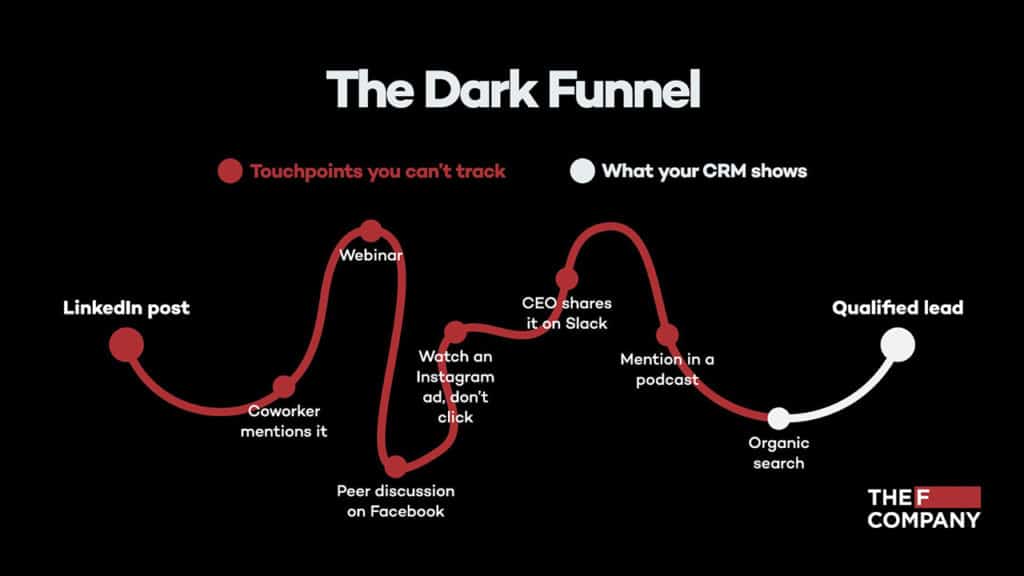
Dark B2B Sales Funnel © The F Company
This illustrative buying journey by Gartner outlines the complex reality of modern B2B Sales.
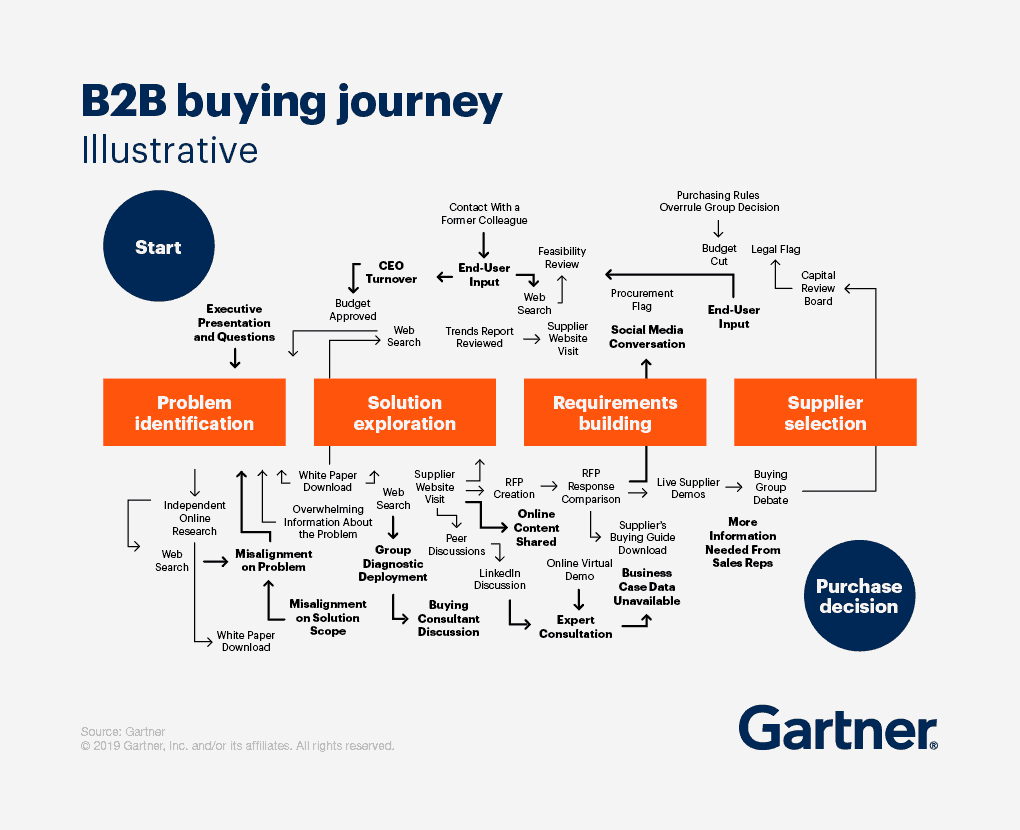
B2B Buying Journey Gartner © Gartner
Internal Sales Process
The internal sales process encompasses how sales teams operate from a company perspective. It revolves around internal processes typically built and maintained in a CRM (Customer-Relationship-Management) system.
In an ideal world, the internal sales process would perfectly mirror the customer’s buying journey. However, due to unpredictable human behavior and the dark funnel concept, achieving this is a challenge.
The internal B2B sales process has the following phases:
- Lead Generation
- Lead Qualification
- Opportunity Management
- Deal Closing
- Customer Retention Management
Now, let’s look at these phases and explore how they can be connected to the customer’s buying journey.
How to Create a B2B Sales Process
Follow these 4 Steps
Chapter Overview
To establish an effective sales process, you need to master the following:
- Gain a deep understanding of the target market, including thorough research on the competition.
- Familiarize yourself with your target audience, identify the ideal customer profile, and comprehend their challenges, especially their most pressing pain points.
- Develop a comprehensive solution portfolio of products and services that effectively address their problems and deliver significant value.
- Assess the capabilities of your sales team and evaluate your company’s tool landscape to ensure optimal performance.
Based on these aspects, you can start working on your sales process (internal view) to meet your targeted buying journey.
This includes the already-mentioned phases:
- Lead Generation and Lead Qualification
- Opportunity Management
- Deal Closing and Fulfillment
- Customer Retention Management
Lead Generation and Lead Qualification
These phases are part of Lead Management. Lead Management aims to establish a constant flow of sale opportunities. It is the essential phase between creating awareness and demand and a successful sales deal.
It starts with identifying potential leads and winning them. Cold leads are then nurtured throughout the buying journey. Every interaction is tracked and validated. This process, known as lead scoring, gradually increases the likelihood of turning a cold lead into a hot lead. Then, ultimately reaching a 100% chance of becoming a sales opportunity.
The sales team typically handles the final qualification of hot leads, while the earlier steps primarily fall under the purview of marketing responsibilities in lead management.
Opportunity Management
An opportunity is an active sales case and is the subsequent step once your sales team has successfully qualified a lead.
Tracking progress on opportunities is facilitated using CRM, especially considering the potentially lengthy buying journey in B2B. It is, therefore, crucial to record every touchpoint with the prospect, be it a phone call, visit, or any other form of interaction, including digital channels like the website or social media.
At the end of this sales process phase, the opportunity attains a 100% likelihood of success, indicating a successful sale.
Deal Closing and Fulfillment
After securing an opportunity, the fulfillment phase begins. A lasting collaboration with your customers is crucial, particularly with large projects or complex machinery. This phase ultimately determines whether the acquired customer becomes loyal or merely a one-time customer.
B2B markets have a limited number of potential customers. This underlines the importance of building a loyal customer base and fostering repeat business.
Customer Retention Management
Acquiring a customer is significantly more costly than nurturing a solid relationship. A dedicated customer retention process helps to manage existing customers. In B2B, sales teams are often organized via Key Account Management. This concept assigns sales representatives or teams to specific, typically larger, accounts.
Consequently, B2B sales is often about winning new opportunities with existing customers. Not so much searching and winning new customers.
Marketing addresses this approach via account-based marketing (ABM).
Examples of B2B Sales
Read Examples for Services, Products and Digital Products
Chapter Overview
We already have learned that B2B sales occur when one business purchases goods from another company. Examples are along the value-added chain, like selling iron ore to a steel manufacturer or a graphic card producer selling to a laptop brand.
B2B Value Added Chain Example © B2B Marketing World
Here are some examples, organized by the type of goods:
B2B Sales Example for Services
Typical examples of services are consulting companies.
- An IT consulting firm, for instance, may offer its expertise to other companies. Most prominent examples worldwide include Gartner, Accenture, Deloitte, and Tata Consulting Services
- A digital marketing agency might deliver SEO or content marketing services to help other businesses improve their online presence and visibility. Examples are Hubspot, WebFX, and Neil Patel Digital.
- Small-and-medium-sized companies typically outsource their tax filing and controlling tasks.
- B2B service examples also include purchasing cleaning services and building maintenance.
B2B Sales Example for Products
This category is probably the easiest one. All products manufactured along the value-added chain and sold to other businesses are examples of selling and buying B2B products.
- Suedzucker AG is one of the biggest sugar producers worldwide. Selling sugar to Nestlé to produce Nesquik, Cheerios, or KitKat makes the transaction a B2B sale.
- Leading steel manufacturer China Baowu Steel Group sells their products to companies like Würth or Linkwell, who produce screws.
- HP or Dell purchases graphic cards from AMD or Nvidia. These are examples more towards the final product – the computer. Note that this is also an example of companies acting on B2B and B2C markets because you may also purchase the graphic card as a consumer.
B2B Sales Example for Digital Products
Classic examples of digital products in B2B are all sorts of software.
- Microsoft 365 – numbers vary, but millions of companies worldwide use the Microsoft 365 product family. Making it a prime example of a B2B sale of digital products.
- CRM and ERP systems from SAP and Salesforce dominate enterprises globally. They are the IT backbone of countless businesses worldwide.
- Smaller applications, like specialized SEO software, e.g., thruuu.com, or larger ones, like Semrush or Ubgersuggest, are sold as a service. SaaS is on the rise in B2B and is a perfect B2B sales example.
Summary [TL;DR]
B2B Sales in a Nutshell
- B2B Sales, also called Business-to-Business sales, is the buying and selling of goods and services from one business to another. In contrast to companies selling to consumers (B2C).
- The differences between B2B sales and B2C sales include higher average transaction value, longer sales cycles, multiple stakeholders, and educated buyers. By trend, the sold products and services are more complex than in B2C.
- Modern B2B sales require a strategic approach beyond traditional selling techniques. This means aiming for Thought Leadership to use Social Selling and Social Proof strategies to build trust with potential customers. Account-Based Selling & Marketing helps to communicate tailored information and customized offers for each customer. Digital Sales processes increase efficiency and establish modern 24/7 available sales channels.
- A B2B sales process consists of lead generation, lead qualification, opportunity management, deal closing, and customer retention management. To create such a sales process, you must deeply understand the target market, familiarize yourself with the target audience, and develop a comprehensive solution portfolio that effectively addresses their pain points.
- Examples of B2B Sales include services (e.g., consulting firms), products (e.g., sugar or steel), and digital products (e.g., Microsoft 365).
Stephan Wenger
B2B Marketing Expert, Editor and Marketing Management Consultant
Stephan Wenger is a seasoned B2B Marketing Expert with more than 10 years of experience in leading global companies. His extensive expertise lies in the realms of B2B online marketing, content marketing, strategic marketing, and driving synergy between sales and marketing, including effective lead management.
You May Like the Following Articles
